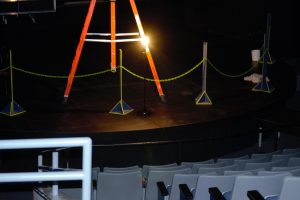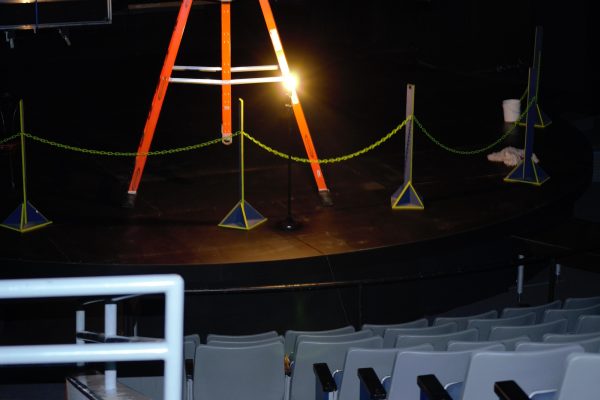Classical music is not boring
How to listen to classical music with a historical context.
February 5, 2020
“Classical Music is not Boring,” read director of music education and orchestral activities Christopher Hanson’s News and Nachos PowerPoint slide. Hanson later admitted that, indeed, “some music is boring.”
Classical music filled the room Thursday, Jan. 30 as students and faculty entered Eaton Hall to attend the first News and Nachos of the quarter.
Standing at the front of the room was Hanson, humming along to the notes as Alyssa Walter, history professor and co-founder of News and Nachos, introduced Hanson.
The topic of classical music seems to be different from past topics such as the Hong Kong Protests and the Second Amendment in terms of news. However, Hanson curtailed his discussion about the historical contexts behind listening to composers like Beethoven.
“The best part of a liberal arts institution is that everybody gets to talk to each other. I am thrilled to be able to talk about music and history integration. This is a huge part in the music discipline to understand how works are performed — listened to and performed,” Hanson said.
Unlike other art forms, Hanson emphasized the three-person exchange that is involved in music: the producer, the artist and the listener
Building on this, Hanson facilitated audience interaction, asking for the listeners to describe the sounds of the various symphonies played.
“I have fallen asleep in concerts and that’s okay. It doesn’t mean that certain music suddenly loses value because you didn’t like it or fell asleep,” Hanson said as sounds of symphonies filled Eaton 112.
Even as a violinist, Hanson recalled the times where particular classical music did not draw his attention but, in doing so reminded the audience that human interpretation of music differs.
“Humans lived experiences change how we engage with the arts,” Hanson said. “It is all based on the context of your life but, more importantly, the life of the composer it was written.”
Although Hanson noted that many familiar and great composers are of white, European backgrounds, he urged his audience to explore composers from different ethnic backgrounds.
“There are other composers we don’t know about because of their race, gender and the times they were living.”
Hanson followed this by playing a piece from Le Chevalier De Saint-Georges collectively known as “the black Mozart” who sounded similar to the prolific composer but is less known.
“Music doesn’t sound ‘black’, music doesn’t sound as the composer identifies themselves culturally or socially. It sounds the way they wanted it to or the way they wrote it,” Hanson said.
As his discussion continued, Hanson played symphonies from Mozart, Beethoven and Saint-Georges, recognizing the distinct characteristics that made these pieces so prevalent.
As his lecture came to a close Hanson urged the audience to continue listening to music they enjoy but in a new light.
“I tend to put older music in a box to the point where I forget the very real influences of patronage and the different personalities of the musicians,” student Sarah Owen said.
In his last remarks, Hanson urged students to, “Learn, listen and enjoy music as an incredible art form that tells us who we are in a historical context.”
























































































